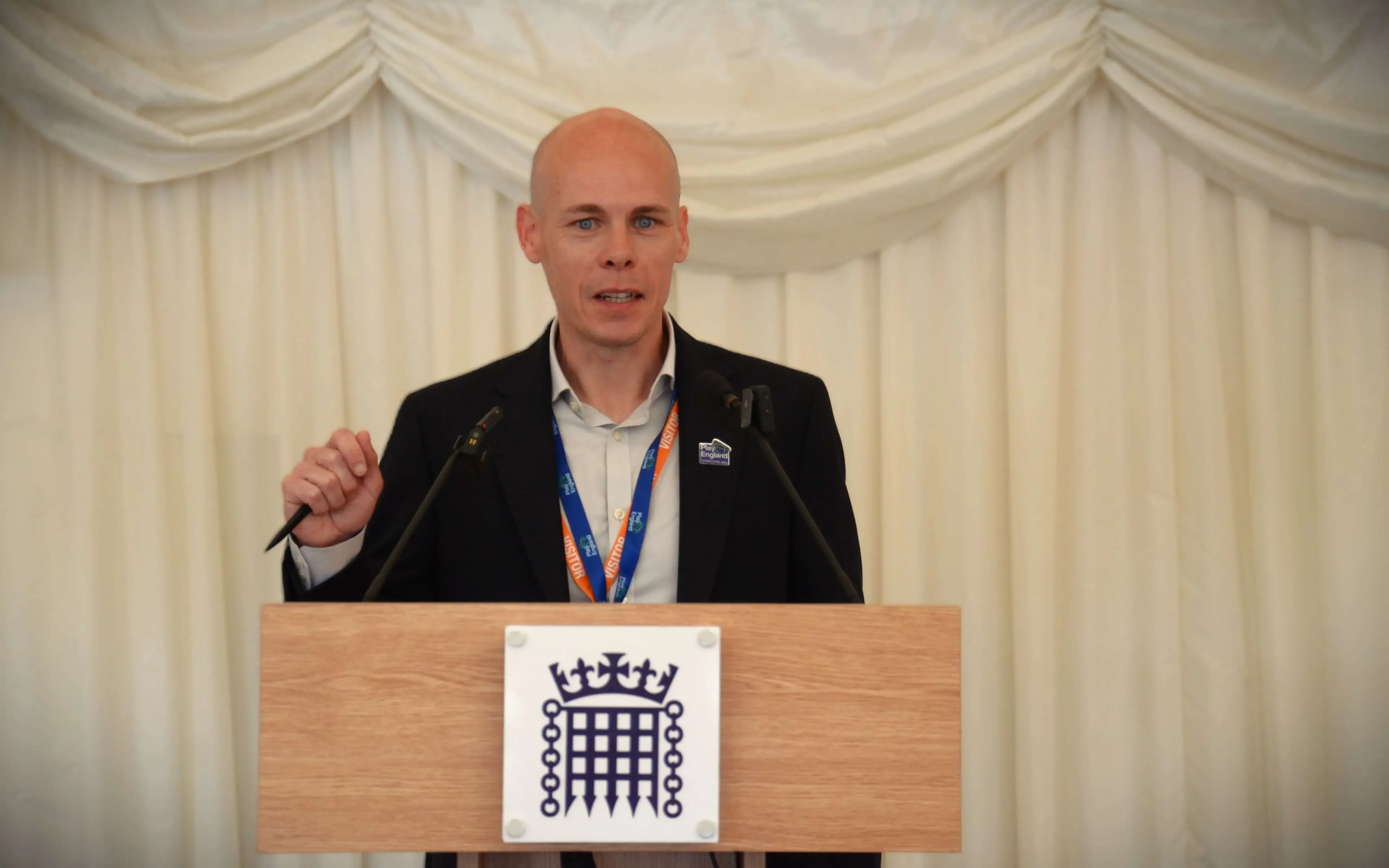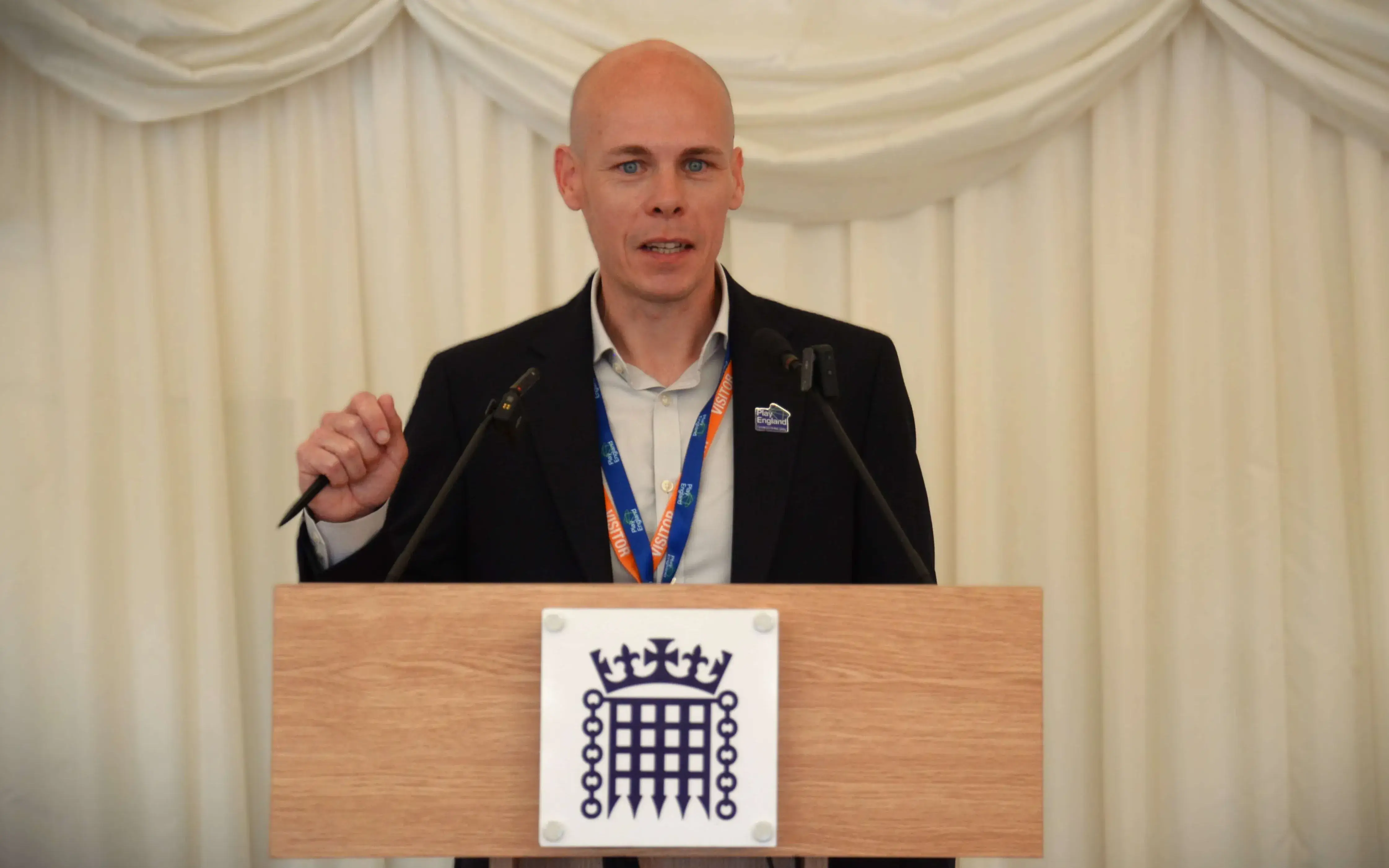
We interviewed Eugene Minogue, Executive Director of Play England. Their new 10-year strategy, It All Starts with Play!, aims to restore play as a vital part of childhood across England by 2035. The goal: to make play normal, visible, and accessible for every child, everywhere.
What motivated Play England to undertake this strategic reimagining and develop a new 10-year strategy?
Across England, children’s freedom to play has been squeezed out of everyday life. Adventure playgrounds have closed. Streets have filled with traffic. Playgrounds have been left to rot. And children are paying the price — through rising mental health challenges, reduced physical activity, and growing inequality.
Play England’s new 10-year strategy, It All Starts with Play!, is a bold and practical plan to restore a play-based childhood for all children in England by 2035. It marks a reset — a strategic reimagineering grounded in rights, evidence, public health and community power. At its heart is a mission to make play a normal, accepted and visible part of everyday life again — by shifting society from a culture of permission to one of acceptance.
Could you explain the concept of “Play Sufficiency” and why it is central to the strategy?
Play sufficiency means ensuring every child has enough time, space, opportunity and freedom to play in the places they live, learn and move through each day. It’s about treating play as essential infrastructure — as vital as housing, health, transport or
education.
Inspired by successful legislation in Wales, we are calling for Play Sufficiency legislation in England. This would place a statutory duty on local authorities to assess, plan and secure play opportunities for all children — embedding play in local plans, design codes and decision-making, just as they do for schools or roads.
How does Play England plan to influence legislation and public policy to secure the right to play in England?
We’re advancing both long-term strategy and near-term legislative action. Right now, we’re working with cross-party MPs to table an amendment to the Planning and Infrastructure Bill that would introduce a statutory duty for play sufficiency.
We’ve also helped establish the new All-Party Parliamentary Group (APPG) on Play to build sustained political focus. Alongside this, we’re convening national partners to campaign for a new National Play Strategy — backed by government and embedded
across planning, public health, education and local delivery.
What role did open sessions and public consultation play in the development of this strategy?
This strategy was built through a year-long process of open sessions, co-design and consultation — shaped by children, families, playworkers, researchers and decision- makers across England.
From national workshops to in-depth sessions with children, we asked one central question: What would it take to make play a normal, accepted part of everyday life again? Their insights are woven into every section — because this wasn’t about writing a strategy behind closed doors. It was about building a shared vision for change.
That commitment doesn’t end with publication. We’re launching Children’s Assemblies to ensure children remain central to how the strategy evolves — helping us stay accountable and grounded in real experiences from the ground up.
What are the main challenges you foresee in implementing the strategy, and how do you plan to address them?
The biggest barriers are cultural and systemic. Play is still too often seen as trivial — something to allow rather than something to protect. Shifting that mindset takes more than individual action — it requires collective, structural change.
That’s why our strategy is grounded in Lott’s STAR Framework, which sets out the four essential conditions for play: Space, Time, Acceptance and Rights. These are the foundations of play sufficiency — and we use them to guide action across four interconnected priorities: Spaces, Skills, Systems and Society.
From reforming planning and infrastructure to shifting public attitudes and building a recognised, respected workforce, we take a whole-system approach. Change won’t come from one place — it has to come from everywhere.
How will equity and inclusion be addressed to ensure that all children, regardless of background, have access to play?
Equity is non-negotiable. Every child has the right to play — but too many face barriers due to poverty, disability, racism, geography or discrimination.
Our strategy is clear: play must be inclusive, accessible, representative and just. We are committed to removing physical, societal and systemic barriers — supporting inclusive design, tackling stigma, and amplifying the voices of marginalised children. This includes working with grassroots organisations led by and with minoritised communities, and embedding accessibility and inclusion throughout planning, provision and policy.
What steps are being taken to ensure the sustainability and funding of the initiatives proposed in the strategy?
We are building for the long term. That means securing dedicated, fair and sustained investment in play — and ending the reliance on short-term, competitive grants.
We’re exploring new models of public, philanthropic and social investment — and calling on national and local government to treat play as essential infrastructure. Alongside this, we’re building local systems and leadership that value play, with the skills, knowledge and trust needed to deliver it.
To keep the strategy, live and responsive, we’re embedding a three-year Reflect–Reinvigorate–Renew cycle — ensuring we learn, adapt and reinvest based on what children, families and communities need most.
What role can local communities, schools and families play in supporting and promoting this strategy?
Everyone has a role to play. Schools can protect time for unstructured play.Communities can reclaim public space. Families can prioritise play in everyday life.
This strategy is about shifting from individual responsibility to shared societal duty. Play isn’t a luxury — it’s a right, a need, and a public good. We’re building a movement to re-norm play — not just as something children do, but as something everyone accepts, protects and champions.
What are your hopes for the future of children’s play in England by the end of this strategic period in 2035?
By 2035, we want to see a generation of children growing up in a country that truly values play — where it’s a normal, accepted part of daily life in homes, schools, parks and streets. A country where children’s freedom to play is not just restored, but
protected in policy, embedded in infrastructure, and championed by culture.
We want children to know that their voices helped shape the world around them — because they were listened to, respected, and included in decisions that mattered. Through Children’s Assemblies and our three-year Reflect–Reinvigorate–Renew
cycle, we’ll make sure that ambition becomes reality.
This is about more than play. It’s about building a fairer, healthier, more connected society. Because if we want stronger communities, happier children, and a better future... It all starts with play.






Add new comment